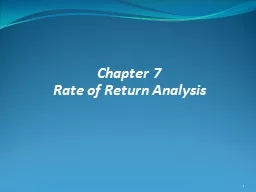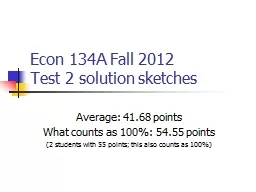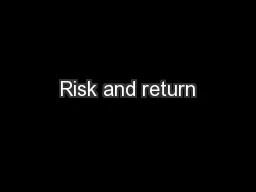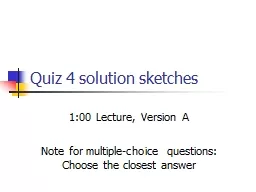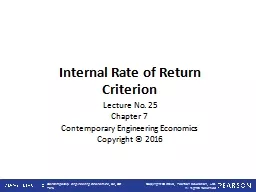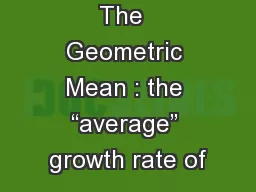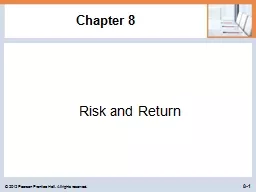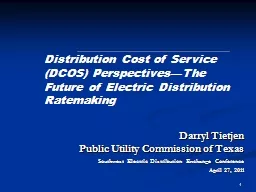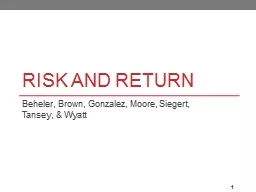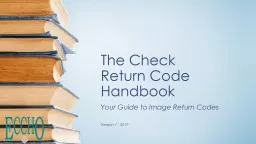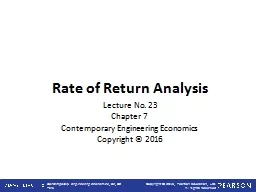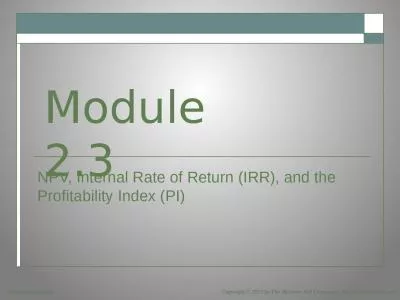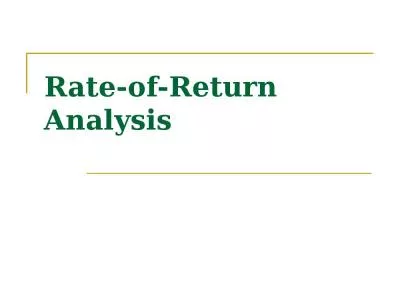PPT-Chapter 7 Rate of Return Analysis
Author : stefany-barnette | Published Date : 2018-03-12
1 Chapter Contents Internal Rate of Return Rate of Return Calculations Plot of NPW versus interest rate i Fees or Discounts Examples Incremental Analysis Using
Presentation Embed Code
Download Presentation
Download Presentation The PPT/PDF document "Chapter 7 Rate of Return Analysis" is the property of its rightful owner. Permission is granted to download and print the materials on this website for personal, non-commercial use only, and to display it on your personal computer provided you do not modify the materials and that you retain all copyright notices contained in the materials. By downloading content from our website, you accept the terms of this agreement.
Chapter 7 Rate of Return Analysis: Transcript
Download Rules Of Document
"Chapter 7 Rate of Return Analysis"The content belongs to its owner. You may download and print it for personal use, without modification, and keep all copyright notices. By downloading, you agree to these terms.
Related Documents

